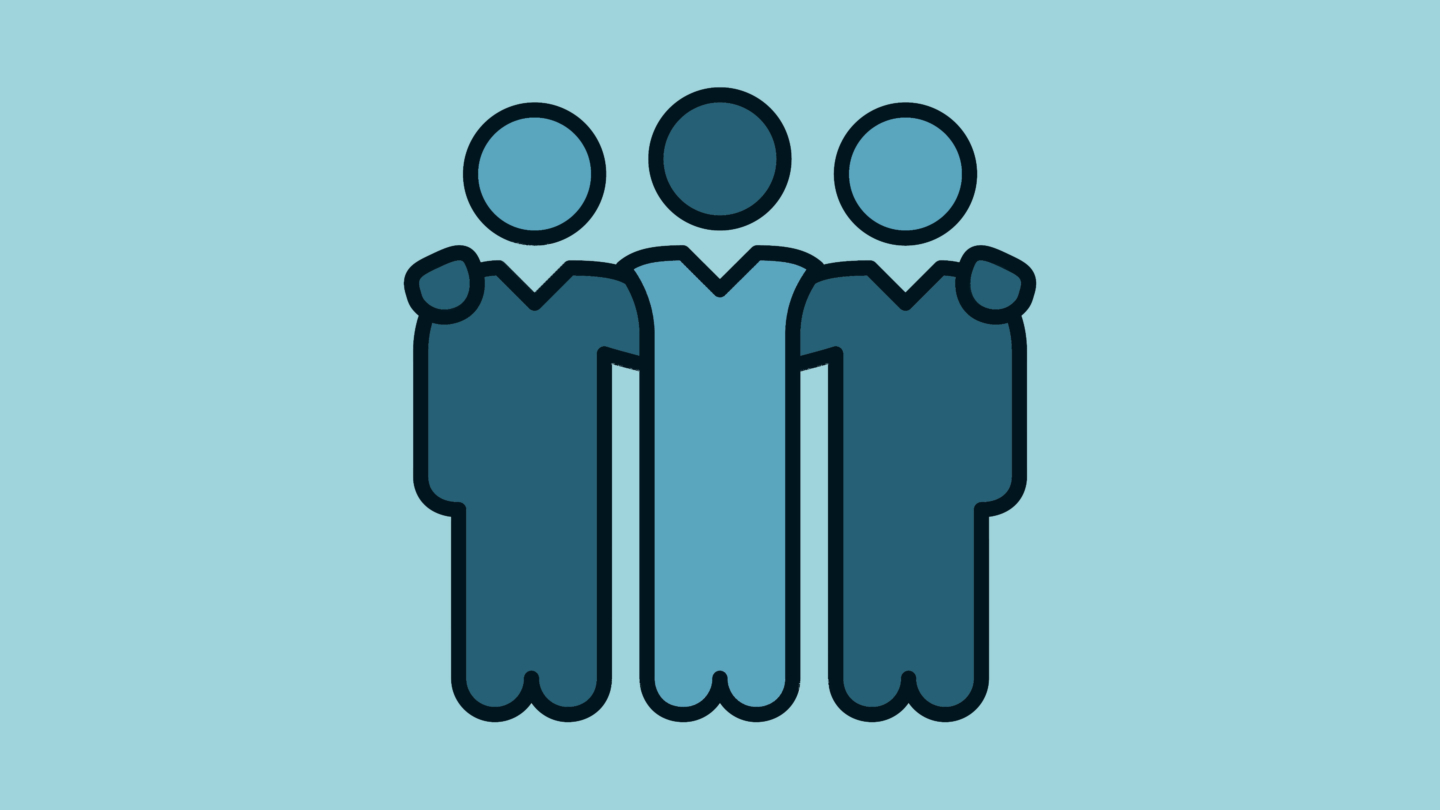Work by the Numbers is a deep-dive into the biggest trends, research, and surveys in the world of work and real estate.
Over the past two years, workers have had to learn to do their jobs and collaborate remotely. Parents became de facto teachers while juggling their work responsibilities. As the great resignation picked up speed, workloads increased as colleagues left for other opportunities while those who remained were made to pick up the slack. At the same time, a never-ending news cycle of troubling world events, rising inflation, and general uncertainty have had us all on edge.
Those extraordinary experiences we all went through have been taking a toll. Stress and burnout are on the rise, and a growing number of people feel that their employers don’t care about their well-being.
Many employees feel like they’re not being heard. Just 24 percent of U.S. workers feel their employer cares about their well-being, according to a February 2022 Gallup survey of 15,001 people. That’s the lowest level in almost a decade. Interestingly, that stat peaked at 49 percent in May 2020, up from 29 percent in 2019, before the pandemic. The likely conclusion: Workers were generally satisfied with how their employers handled the initial waves of the pandemic—but those sentiments rapidly faded by 2022.
As companies roll out their hybrid work strategies, it’s important that they understand employee burnout and look for ways to support their employees. For Mental Health Awareness Month, we examine the state of employees’ mental health in the workplace and take a look at what companies are doing to offer support.
What is burnout and how does it impact mental health in the workplace?
Burnout is a syndrome that results from workplace stress that has not been successfully managed, according to the World Health Organization. Between the stresses brought on by working through a pandemic and the increased hours workers are devoting to their jobs, it’s not hard to identify where this stress might be coming from. Burnout is not a medical condition, but it does have the potential to negatively impact mental and physical health. It can lead to elevated levels of anxiety and depression, lack of sleep, increased fatigue, and many other issues.
What makes burnout especially tough to manage is that it affects the most dedicated employees. Typically these employees take on more responsibilities, work longer hours, and have higher levels of job-related stress. Over time, their dedication and lack of balance outside of work can backfire. They easily end up with more responsibilities as supervisors recognize their effectiveness. But sometimes wages, recognition, and opportunities for advancement don’t keep pace.
Those dealing with burnout typically exhibit three common characteristics:
- Physical exhaustion: Chronic feelings of energy depletion, fatigue, and exhaustion are some of the most common signs of burnout. These employees start the day feeling depleted of energy and end the workday by crashing on the couch or going straight to bed.
- Cynicism: People experiencing burnout often feel an increased mental distance from their job, characterized by feelings of negativity or cynicism. They doubt the importance of their work and wonder if anything they do really matters.
- Professional efficacy: The third and perhaps most troubling characteristic of burnout is a reduced sense of personal efficacy. No matter how successful, productive, or effective a person is at their work, they grow increasingly convinced that their work doesn’t make an impact and eventually begin to feel incapable of completing even the most mundane tasks.
The current burnout crisis
Burnout is not a new issue for workers, and while the pandemic didn’t cause the problem, it certainly didn’t help. Feelings of burnout increased from 43 percent in January 2020, before the pandemic, to 52 percent in 2021, according to a survey of 1,500 U.S. workers conducted by Indeed in early 2021. The survey also indicated a greater awareness of the problem, with 67 percent of respondents saying burnout increased since the start of the pandemic.
Workplace stress and burnout go hand in hand. In a 2022 report, the American Psychological Association found that both issues were at an all-time high across all professions: 79 percent of the 1,501 U.S. workers surveyed in late 2021 reported experiencing work-related stress in the past month, with 3 out of 5 reporting negative impacts on their life and work. Of those, 36 percent reported cognitive weariness, 32 percent reported emotional exhaustion, and 44 percent reported physical fatigue—all tell-tale signs of burnout. Indicative of the sharp increase in burnout, those reporting physical fatigue jumped to 44 percent, a 38 percent increase since the survey was last conducted in 2019.
Chronic burnout also impacts job performance as long hours, overwork, and high stress erode mental health. A 2019 Gallup survey of 12,658 full-time employed U.S. adults found that those dealing with burnout were 63 percent more likely to take sick days, were half as likely to openly discuss performance goals with their supervisor, and were 13 percent less confident in their job performance. They were also 2.6 times more likely to be actively job searching, and—most shockingly—they were 23 percent more likely to visit the emergency room.
What companies are doing to reduce burnout
Most employers know that employees with good mental health are critical to a well-functioning organization, but few have plans to address this complicated issue. In an October 2021 survey of 322 U.S. employers by management consulting firm Willis Towers Watson, 86 percent of respondents said that mental health, stress, and burnout were a top priority, but 49 percent had yet to put together a formal plan to address the issue, and only a quarter had an articulated well-being strategy in place.
Among the companies actively looking for ways to improve employee mental health and reduce burnout, a few strategies have emerged. Here are five of them.
Increased focus on diversity, equity, and inclusion (DEI)
Many companies are looking for ways to better support employees, especially those who are underrepresented in the workplace and in communities. And with good reason—the financial and health impacts of the COVID-19 pandemic disproportionately affected Black and Hispanic households. A mid-2021 survey of 3,642 global employers by Willis Towers Watson found that for 60 percent of respondents globally and 73 percent in North America, DEI initiatives were key to addressing employee well-being.

Pay increases
Many employers are responding to rising inflation and increased competition with wage increases. Research and common sense support the idea that better pay leads to higher job satisfaction. It’s less clear how wages affect burnout, which impacts workers at all income levels. That said, it is worth noting that high job insecurity and very low wages do increase the likelihood of burnout.
Some companies are giving bonuses to try to increase retention and satisfaction.
- Credit Suisse offered a onetime $20,000 “thank you” bonus for junior investment bankers.
- Apollo Management offered bonuses up to $200,000 for employees who committed to staying with the company through 2022.
- Many restaurant chains have also raised wages and offered bonuses.
Encouraging better work-life balance
Encouraging employees to take more time off is a popular remedy used to promote work-life balance. Several companies are expanding the paid time off (PTO) they offer to their full-time employees:
- Fidelity granted employees five additional paid days off to use when they want, dubbing them “relief days.”
- Marriott International implemented a similar policy with three paid “take care days off.”
- Microsoft granted employees an additional five days of PTO.
- PwC took an extra step to incentivize time off by paying employees $250 for taking a full week off.
- Late in 2020, Google granted employees a company-wide Friday off, dubbing it a “collective well-being” holiday.
- Both Bumble and LinkedIn shut down for a company-wide paid week off.
Companies have found that even when they offer more PTO days or unlimited PTO, these policies don’t always relieve the issue of burnout. Employees worry that work will pile up while they’re away, making the return even more difficult. Dedicated employees who are most susceptible to burnout are less likely to voluntarily take time off. Company-wide shutdowns help grant permission to disengage from work without anxiety.
Creating a culture of well-being
Many employers are looking for ways to create a less stressful work environment where employees feel supported and valued. These include strategies to improve relationships between employees and their managers by making sure that employees are clear on their role at the company and can rely on a consistent and predictable set of responsibilities, and finding ways to authentically reinforce the value each individual brings to their team. Here are some ways companies are doing that:
- Both Cisco and Ben & Jerry’s provide employees with spaces where they can take naps during the day. Research suggests that napping during the day can boost memory, improve job performance, enhance your mood, and reduce stress.
- Storyblocks has a “no-meetings Wednesday” policy. The aim is to give employees more time for focused work and allow more control over their schedules.
- Slack and many other companies have done away with the traditional office and installed a flexible work policy that allows their employees to work when and where they want.
A strong sense of community and friendships among coworkers have been shown to reduce burnout. This is where a product such as WeWork On Demand and WeWork All Access can help bring remote teams back together for collaboration, team bonding, and casual social activities that can ease stress.
Mental health benefits
More employers are including mental health services in employee benefits. In a 2021 survey of 1,686 non-federal public and private employers, the Kaiser Family Foundation found that 39 percent made changes to their health plans to expand access to mental health services. Of those, 6 percent increased their number of in-network mental health service providers, 16 percent developed new resources and employee assistance programs, and 31 percent expanded ways employees can access help through telemedicine services.
We’ve all been through a lot, and workplace stress has taken a larger toll on many of us than it needs to. Overwork and burnout have the insidious ability to wreak havoc on the most dedicated employees, leaving them with serious and lasting health issues. Fortunately, many companies now recognize the severity of the issue. While there’s no easy solution, there are plenty of opportunities to craft a healthier and happier workplace.
Bradley Little is a writer and content creator based in New York City.
Rethinking your workspace?










